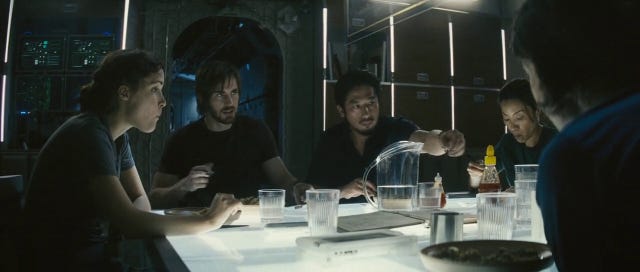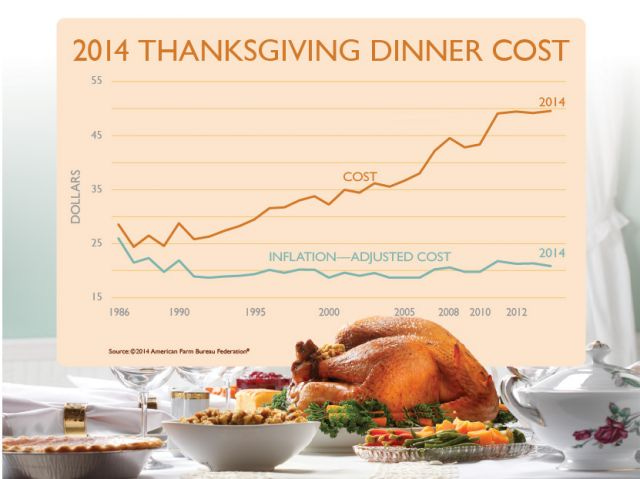So What, Who Cares (vol 1, issue 56) How printers just opened up manned space exploration
Hello and -- for U.S. readers -- welcome to one of the busiest days of the year for ordering pizza.
*
3-D printing has come to space. It's not outer space but low Earth orbit, but the relevant point here is that there is an operational 3-D printer aboard the International Space Station, and it is now successfully printing objects based on commands from Ground Control in Huntsville, Alabama.
So what? If space stations can begin to manufacture the components they need, that changes a lot of the core practices about how to provision a space mission.

Who cares? People who plan on spending a lot of time in space, and the people who pay for them to get there. The physical act of sending people to space isn't really the issue -- you just need science-fu, money and fuel to burn, political will, etc.
The limiting factor in space exploration is stuff, i.e. the supplies people need to meet their physical needs and do their jobs when they can't just nip out to the nearest Home Depot when something breaks. Right now, outfitting an orbiting outpost requires a lot of redundancy because of the unpredictability of our nascent space industry. Being able to fabricate some of the components used to maintain a space station could ease some of the pressures inherent in space exploration.
*

It will cost you $104.91 to buy your Thanksgiving feast at Whole Foods, a 0.3% price reduction from 2013. So reports Bloomberg, with an incomplete list of the 23 items required for the feast (and no headcount for how many diners are enjoying $104.91 worth of dinner).
By contrast, the American Farm Bureau estimates you can feed ten people Thanksgiving dinner for $49.41, a 0.75% rise over last year's cost. Their complete, twelve-item shopping list: 12 rolls; two pie shells; 12 ounces of fresh cranberries; one 16-pound turkey; 14 ounces of cubed stuffing; a pound of green peas; a one-pound relish tray with carrots and celery; 30 ounces of pumpkin pie mix; a gallon of whole milk; half a pint of whipping cream; three pounds of sweet potatoes; "misc ingredients."
So what? The real story is not that someone at Bloomberg is sitting on a green bean casserole recipe to die for, but that Whole Foods is trying to shake its "Whole Paycheck" image by pushing its prices down as more middle-market competitor prices climb up.
The Bloomberg "study" (which lists neither the 23 items used nor their individual costs) showed that the items at Whole Foods were "a bit more" than at Trader Joe's, a chain that makes twice as much money per square foot as Whole Foods. TJ's also has much more favorable consumer perception than Whole Foods in the categories of "buzz" and "purchase consideration," i.e. "When you are next in the market to purchase products in this specific category, where will you go to buy them?"
So 2015 is the year Whole Foods tries to grab the Trader Joe's customer. They've got to move "downmarket" anyway -- Walmart's announced that they'll be expanding their own organic food selections and they'll be selling those items as the same price as non-organic offerings. There is money to be made from working- and middle-class consumers who are worried about what's in their food.
Who cares? About the grocery story? Anyone who eats in America -- we're about to head into some wild times, price-wise as organic farmers grapple with demand outpacing supply and as beef and pork prices remain high thanks to the one-two wallops of livestock disease and midwestern drought.
(But good news! Record dairy production combined with a weaker export market should mean lower prices on milk, butter and cheese in 2015.)
But here's another reason to care about the Bloomberg story I linked to: Because it was not at all transparent in its data collection or the items that constitute a like-to-like comparison between stores. Although the rest of the story had some solid reporting on the problems Whole Foods faces in market positioning (i.e. the "Whole Paycheck" thing) and a look at how Whole Foods is attempting to move down the income brackets to new markets, the story hinged on things like:
The study released this week also found that specialty grocery stores have lowered their Thanksgiving food prices by about 7.6 percent from last year, while mass, discount and warehouse retailers raised prices. At Wal-Mart Stores Inc., the turkey-day items are 2.9 percent pricier than last year, while they cost 6 percent more at Target Corp.
While not mentioning what's going into shopping carts to account for those price bobbles or noting whether there was any consistency in pricing trends (downward or upward) for staples like turkey, milk, potatoes or fried onions. The story's incomplete because the data is not transparent to the reader.
*

Your pop culture note of the day: The trailer for Jurassic World dropped today, complete with Gallimimus, Apatosaurus, Mosasaurus, Stegosaurus and Velociraptor, and I would be remiss if I did not point you all to other enjoyable elements of dinotainment-industrial complex.
There is, of course, Jeff Goldblum's sing-along rendition of the lyrics to the Jurassic Park theme song (the good stuff starts at the 1:30 mark) and his participation in a Jurassic Park-themed wedding photo.
But I also want to point you all to the hilarious blog Dinosaurs! WTF?, which purports to cover (and may have possibly invented) the Conservative Dinosaur Readiness Movement. If you love nerding out over dinosaurs and you enjoy on-point satire, this is pretty much your dream read. And they address Jurassic Park:
If you want to be a dinosaur, you have to figure out a way to out-murder every living thing in your biome (know thy enemy, know thy self). It wasn’t until Michael Crichton decided to point his imagination at dinosaurs that anyone actually tried thinking creatively about Dilophosaurus in Jurassic Park. He thought Dilophosaurus might have been a spitty, venomous sort of animal. Why not? It didn’t require any fossil evidence, and he had already pushed the limits of imagination in his novel by suggesting that children might have the ability to read.
Remember, T. Rexes with lasers were the bad guys in The Life and Death of Tommy Chaos and Stacy Danger (vol 1, issue 39). (Then again in vol 1, issue 39, I had really high hopes for Constantine and that hasn't gone as well as it could. I still stand by my assertion that the casting is not the problem.)
And finally, Philip Michaels and I return with our third installment of Phil And Lisa Ruin The Movies all so we can discuss Jurassic World.
*
Did you miss an issue of So What, Who Cares? The archive is here.
Also, there is now a topic index that tells you what was in each issue. If you're like, "When did she send out a picture of Brandon Routh snuggling a kitty cat?" -- well, now you can find it. (It was November 11, 2014, btw.)
As always, I welcome your feedback and suggestions via email or Twitter. Always let me know what you think about So What, Who Cares? If you really like it, tell a friend to subscribe.

